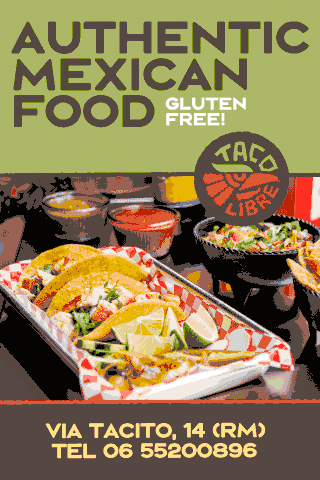What Italians Eat for Christmas
What Italians Eat for Christmas: A Feast of Tradition and Regional Delights
Italy is a country where food serves as more than sustenance — it’s a vital part of cultural identity, a symbol of togetherness and a source of pride.
This is especially evident during the Christmas season when tables overflow with traditional dishes that vary from region to region, and sometimes even from family to family. Italian Christmas meals are a celebration of the country’s culinary heritage, with recipes often passed down through generations.
Here’s a closer look at the diverse and delicious foods Italians enjoy during the festive season.
The Christmas Eve Feast: “La Vigilia”
The festivities typically begin on Christmas Eve with “La Vigilia,” a meal rooted in religious tradition. Many Italians avoid meat on this day, instead enjoying a seafood feast called “La Cena della Vigilia.” The number of dishes often reflects Catholic numerology, with seven, nine, or even 13 different seafood preparations gracing the table.
Popular dishes include:
Baccalà: Salted cod, either fried or stewed in a tomato-based sauce.
Spaghetti alle Vongole: A simple yet flavourful dish of spaghetti with clams.
Fritto Misto di Mare: A mix of fried seafood such as shrimp, squid and small fish.
Insalata di Mare: A cold seafood salad featuring octopus, mussels, and prawns.
Regional variations abound. In Naples, eel (“capitone”) is a must, while in Sicily, pasta con le sarde (pasta with sardines) might take centre stage.
Christmas Day: The Main Event
While Christmas Eve focuses on seafood, Christmas Day is all about meat. The meal begins with antipasti, including cured meats like prosciutto, salami, and coppa, paired with cheeses, olives and marinated vegetables. From there, the courses unfold in grand style.
First Course (“Primo”):
In northern Italy, stuffed pasta such as tortellini or cappelletti served in broth (“brodo”) is a classic choice. This dish is both comforting and festive, with the broth often simmered for hours.
In southern Italy, lasagna or baked pasta dishes like “timballo” or “pasta al forno” are popular.
Second Course (“Secondo”):
Roasts take centre stage, with options like arrosto di vitello (veal roast) or agnello al forno (oven-roasted lamb). In some areas, game meats such as wild boar or rabbit make an appearance.
In central Italy, porchetta—a slow-roasted, herb-stuffed pork roast—is a star attraction.
Side Dishes (“Contorni”):
Seasonal vegetables prepared simply but elegantly. Think roasted potatoes, sautéed greens like chicory or spinach, or artichokes (“carciofi”) cooked Roman-style.
The Sweet Finale: Desserts
No Italian Christmas meal is complete without desserts, and the options are as varied as the regions themselves.
Panettone and Pandoro: These two iconic Christmas cakes are staples. Panettone, from Milan, is a dome-shaped cake filled with raisins and candied fruit. Pandoro, from Verona, is a buttery, golden sponge cake dusted with powdered sugar.
Struffoli: A Neapolitan specialty, these small fried dough balls are coated in honey and decorated with colorful sugar.
Torrone: A nougat made with honey, sugar, egg whites, and nuts, available in both soft and hard varieties.
Ricciarelli: Almond-based cookies from Siena, lightly coated with powdered sugar.
Cartellate: Crispy, rose-shaped pastries from Puglia, drizzled with honey or vin cotto (a syrup made from cooked wine).
Each dessert reflects local ingredients and traditions, providing a sweet insight into Italy’s cultural diversity.
Regional Variations
Italy’s regional diversity means there is no single “Italian” Christmas menu. In the north, butter-rich dishes and polenta are common, reflecting Alpine influences. Central Italy, with its rolling hills and farmland, features hearty fare like stuffed pastas and roasted meats. In the south and on the islands, flavors are brighter and often spicier, with liberal use of citrus, almonds, and dried fruits.
For instance:
Veneto: Bigoli in salsa (thick spaghetti with anchovy sauce) might appear on Christmas Eve, while risotto with radicchio or Amarone wine is a festive first course on Christmas Day.
Sicily: The island’s Arabic influences shine in dishes like buccellati, a fig-filled pastry, or cassata, a ricotta-based cake.
Tuscany: Peposo, a slow-cooked beef stew with pepper and red wine, is a warming Christmas dish.
Drinks and Toasts
No Italian celebration is complete without wine, and Christmas is no exception. Regional wines pair with each course, from crisp whites with seafood to robust reds with meat. Sparkling wines like Prosecco or Franciacorta are popular for toasts, while dessert wines like Vin Santo or Moscato accompany sweets.
Liqueurs also play a role, with amaro or limoncello often served at the meal’s end. In Northern Italy, grappa might be offered, while in Sicily, a glass of Marsala provides a sweet finish.
The Day After: Santo Stefano
The feasting continues on December 26, known as Santo Stefano. This day is more relaxed, with families gathering to enjoy leftovers or simpler dishes. It’s also an opportunity to indulge in more desserts and sip on coffee or liqueurs, extending the festive spirit.
Photo: r.nagy / Shutterstock.com.


















